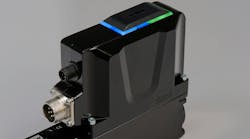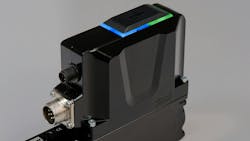Proportional Valves Are Evolving to Adapt to More Demanding Applications
In order to meet more stringent regulations and leverage the latest technological advancements, manufacturers today are working with increasingly complex machines, many with highly integrated and sophisticated hydraulic and electrical systems. Coupled with recent advances in automation and industrialization, troubleshooting has become increasingly difficult when trying to diagnose these more complex systems.
Traditional valve solutions often don’t meet the needs of complex systems, creating a demand for more adaptable, connected and precise proportional valves.
Integrating advanced proportional valves (those that can be adjusted to match the desired output with the input and regulate flow and pressure) into existing machinery, however, can be challenging. The first and, perhaps biggest challenge, is selecting the proper valve to ensure operational efficiency and reliability.
Increased Performance Demands are Being Placed on Proportional Valves
Control systems and electrohydraulic systems are increasingly complex — much more than 40 years ago. As a result, there is a need for greater communication with the valve.
At the same time, productivity expectations are higher than ever, pressuring plant managers and maintenance personnel to identify solutions that improve uptime. That means the components selected must be robust enough to provide a longer service life, less downtime, and result in fast, easy and less frequent maintenance.
Information about machine performance needs to be readily available and easy to access. There exists today a possibility for maintenance managers to retrieve critical information wirelessly and remotely. With wireless scan NFC technology, they can scan real-time data with their phones as part of an efficient preventive maintenance program. They can also remotely monitor conditions with IO-link connectivity.
With the record number of retirements in recent years by seasoned veterans, maintenance also needs to be easy. Today’s younger, tech-savvy maintenance professionals, raised with digital devices in their hands, expect to be supported with the latest online technologies to diagnose and solve technical problems.
The value of connectivity is that it gives facilities the opportunity to interface with components throughout the system, providing a high-level system overview of the entire machine, including the valves. Thanks to IoT (Internet of Things), key components such as valves, pumps and cylinders can be integrated.
The Evolution of Proportional Valves from Analog to Smarter Digital Technologies
Today’s valves are smarter than ever. Connectivity in today’s Industry 4.0 landscape has been a real gamechanger. The addition of advanced electronic components have given valves greater capabilities to help support successful predictive maintenance programs.
Hydraulically speaking, the valves themselves have not changed dramatically over time. What has changed is the addition of sensors and micro controllers which provide operators with greater insights regarding the health of the valve in order to minimize machine downtime.
Industries where this type of knowledge, reliability and uptime matter most include die casting, plastics, injection molding, sawmills, metal forming, stamping, power generation, oil and gas, and defense, to name some of the more common ones.
Considerations for Choosing a High-Performance Proportional Valve
There is a wide range of proportional valves on the market today, but not all perform equally. Choosing the best one for your applications requires a thorough review of your current system — its limitations and its requirements — as well as the environment in which you’re operating.
Earlier-generation analog valves often failed as a result of excessive vibration and shock in certain environments. Plus, their performance data was not readily available.
Then you need to weigh priorities against costs while considering what you’re willing to tolerate in the way of downtime. How much is greater uptime worth to you? How much could you save with preventive maintenance strategies? How much of a difference could easier maintenance and greater visibility into machine performance make for your operation?
When comparing valve options, be sure to evaluate all product features and how they impact your bottom line. Specific attributes and questions worth considering include:
- Fast, easy data access. Is it wireless? Does it provide real-time performance data?
- Readability. Is the data easy to read? For example, some manufacturers, like Parker, have added 360-degree RGB-LED displays.
- Advanced link interfaces. Integrating an IO-Link interface, as an example, facilitates direct communication with the Programmable Logic Controller (PLC), offering access to a wealth of valve parameters and performance data.
- Robustness. The reliability of your operation depends on the quality and durability of all its various components. Valves need to be able to stand up to harsh environments and be vibration- and shock-resistant.
- Membrane integrity. Parker’s new DFPlus Gen IV proportional DC valves feature a pressure compensation membrane that prevents pressure differences caused by temperature changes between the inside of the electronics box and the outside environment. This prevents short circuiting as a result of moisture entering the box.
- Asset information management. Time is money. Today’s lean maintenance teams don’t have time to track down product information when it’s time to reorder a component or verify that the product has been properly tested and certified. That’s why Parker, as an example, created the Parker Tracking System (PTS), a QR code that can be easily scanned to retrieve all pertinent product information.
Smart proportional valves are not new, having been successfully used in many industries for years. But they have evolved to meet changing demands in the market and today offer superior precision and speed, resulting in significantly reduced machine downtime, even in the most challenging environments.
These valves play a critical role in effective preventive maintenance programs by putting an unmatched amount of data at users' fingertips. Choosing the right valve for your application not only means it can adapt and work seamlessly with your existing system, but it can also lead to greater visibility, productivity and profitability.
This article was written and contributed by Thomas Endres, business development, Industrial Motion Systems Group, and Taylor Berry, Industrial Product Manager, at Parker Hannifin.




